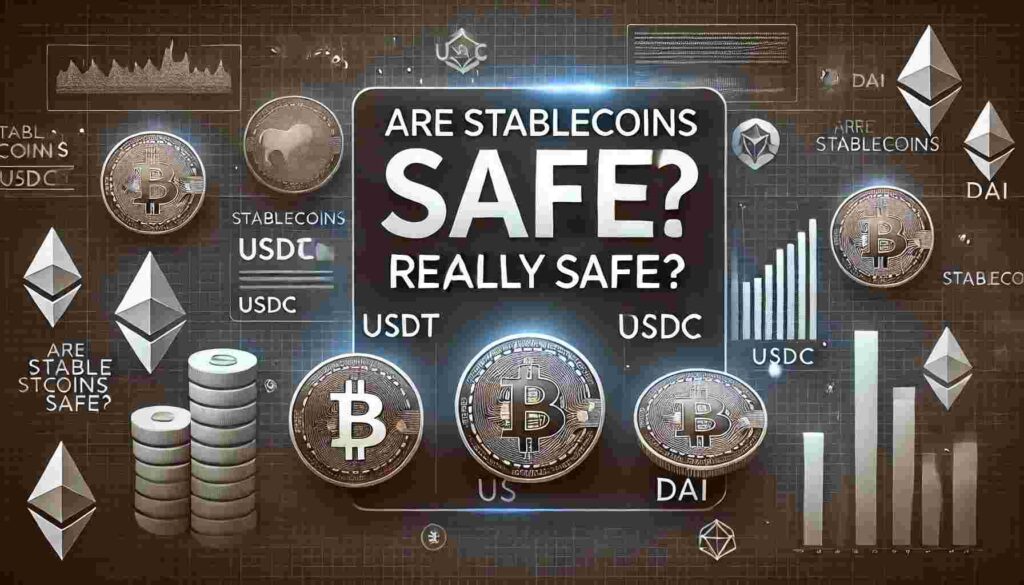
Stablecoins have become a cornerstone of the crypto market, offering a sense of stability in an otherwise volatile ecosystem. Designed to combine the speed and decentralization of crypto with the predictability of traditional currencies, stablecoins are a popular tool for both new and experienced investors. But are they truly as safe as they seem?
Stablecoins are digital assets whose value is pegged to other assets, such as:
Their main purpose is to reduce price volatility – a common issue with cryptocurrencies like Bitcoin or Ethereum.



These are backed by traditional currencies or equivalents held in bank reserves.
Examples: USDT (Tether), USDC (Circle), BUSD (Binance USD)
Risks:
These coins maintain their peg through algorithmic mechanisms without physical backing.
Examples: TerraUSD (UST), FRAX
Risks:
Backed by other cryptocurrencies, often overcollateralized to manage price drops.
Examples: DAI (backed by ETH), sUSD
Risks:
As the crypto industry matures, stablecoins are attracting attention from governments and financial authorities worldwide:
These legal changes will shape how stablecoins operate and whether they remain accessible to global investors.
Stablecoins bring convenience and price stability to the crypto market, but they are not without risk. It’s essential to:
The role of stablecoins in crypto investing, DeFi, and trading is only expected to grow — but their long-term safety will depend on transparency, market confidence, and regulatory clarity.
🧐 Want to learn more or find the best exchange for your stablecoin strategy? Visit CryptoX24.com and compare top crypto platforms today!


